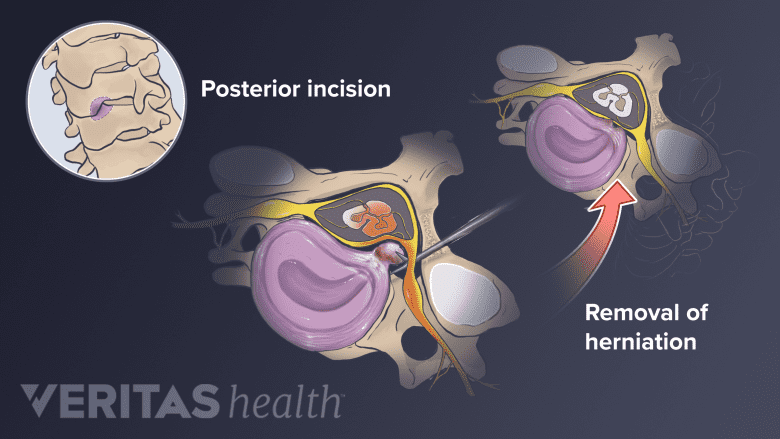When symptoms of cervical stenosis with myelopathy become moderate or severe, the only course of effective treatment is surgery to decompress the spinal cord. If symptoms are minor or barely noticeable however, the condition can sometimes be managed successfully with nonsurgical treatments.
In This Article:
- Cervical Stenosis with Myelopathy
- Symptoms of Cervical Stenosis with Myelopathy
- Diagnosing Cervical Stenosis with Myelopathy
- Treatment for Cervical Stenosis with Myelopathy
- Cervical Spinal Stenosis Video
Treatment for Cervical Stenosis with Myelopathy
Nonsurgical treatment for cervical stenosis with myelopathy typically includes one or more of the following:
Pain medication
NSAIDs provide anti-inflammatory effects and calm inflammation and pain in the neck.
Nonsteroidal anti-inflammatory drugs (NSAIDs), such as aspirin or ibuprofen, may help relieve pain or discomfort. Neuropathic pain medications such as gabapentin, pregabalin, amytriptilene, or duloxetine (among others) may help for some patients.
Activity modification
Sometimes certain activities or holding the neck in certain positions can exacerbate symptoms. Modifying a sleep position or pillow, sitting with better posture, or avoiding strenuous activities may reduce pain and/or other symptoms.
Physical therapy
Neck extension exercises strengthen muscles, improve posture, and alleviate tension in the neck.
A certified medical professional can design a physical therapy program that targets the neck. By improving the neck’s strength and flexibility, posture may be improved and muscles may be less likely to have painful spasms.
See Neck Exercises for Neck Pain
It is important to remember that even relatively minor cases of cervical stenosis with myelopathy are serious because the spinal cord—a critical component for sending signals all over the body—is being compressed too much.
Any treatment program should be under the guidance of a medical professional. Some treatments, such as manual manipulation of the neck, are best avoided due to the risk of doing further damage to the already-compressed spinal cord.
Cervical Stenosis Surgery
When symptoms of cervical stenosis with myelopathy become obvious and persistent, nonsurgical treatments are ineffective and surgery is likely to be recommended as the only way to prevent it from getting worse. The goal of surgery for cervical stenosis with myelopathy is to relieve compression of the spinal cord to prevent further damage.
There are several surgical options for cervical stenosis with myelopathy, but they can typically fall into one of these categories:
Anterior cervical decompression and fusion

ACDF surgery involves disc removal and vertebral fusion.
Anterior cervical decompression and fusion involves approaching the cervical spine from the front and removing any discs, bone spurs, or other structures that might be impinging the spinal cord. It typically includes fusing one or more levels of the cervical spine to maintain stability.
Watch Anterior Cervical Discectomy and Fusion (ACDF) Video
Posterior cervical decompression

In posterior discectomy, the cervical spine is accessed from the back to relieve spinal cord pressure.
Approaching the cervical spine from the back, the bony arch at the back of the vertebra, called the lamina, is usually either removed (laminectomy) or restructured (laminoplasty) in order to release pressure on the spinal cord. A posterior cervical decompression may or may not include a fusion, depending on the type of procedure done and the patient’s individual risk for developing instability in the cervical spine.
Surgery for cervical stenosis with myelopathy is considered successful if the spinal cord can be decompressed, preventing symptoms from worsening. In addition, the hope is that at least some symptoms will be reduced or go away completely as the spinal cord has space to heal. However, the amount of spinal cord healing and symptom reduction can vary from person to person.
Often, multiple spinal levels need to be decompressed, so cervical stenosis surgery tends to be more involved than that for cervical herniated discs or cervical foraminal stenosis.

